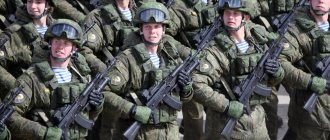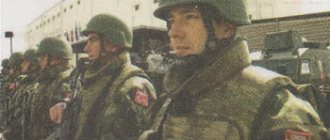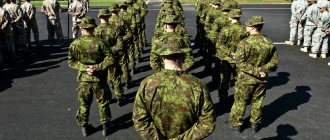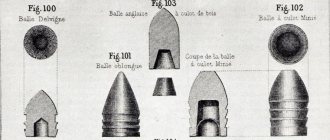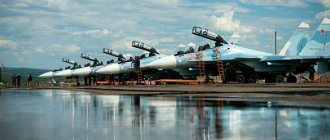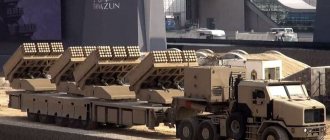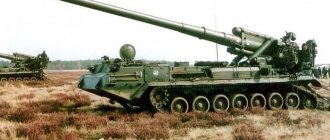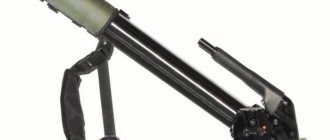Day of Missile Forces and Artillery in Belarus
November 19 is the Day of Missile Forces and Artillery
. This professional holiday is celebrated on the basis of Decree of the President of the Republic of March 26, 1998 No. 157 as a memorial day established in recognition of the merits of military specialists in solving the problems of ensuring the defense and security of the state and designed to contribute to the revival and development of domestic military traditions and increasing the prestige of military service.
In general, artillery is one of the oldest branches of the military. Slavic artillery confirmed its strength and high fighting qualities in the Battle of Poltava, during the capture of Izmail, in the Battle of Borodino, in military conflicts of the 20th century, always making a decisive contribution to achieving a common victory.
The holiday itself - the Day of Missile Forces and Artillery - in Belarus dates back to Soviet times. It was installed to commemorate the outstanding services of the rocket troops and artillery in the fight against the Nazi invaders during the Great Patriotic War. In particular, in the defeat of the invaders at Stalingrad, and the date November 19 is the day the counter-offensive of Soviet troops began at Stalingrad in 1942, in which artillery played one of the key roles.
“God of War” was the name of Soviet artillery back then. Many Belarusian military leaders who headed the artillery of fronts and armies operating in strategically important directions covered themselves with eternal glory. Among the artillery generals, more than 50 people are natives of the Belarusian land. For military merits, over 2 thousand artillery units were awarded orders, about 1200 received honorary titles, over 500 received guards titles, 1885 artillery soldiers were awarded the title of Hero of the Soviet Union.
It was in commemoration of the great merits of Soviet artillery during the Great Patriotic War and in memory of the most important role of artillery in the defeat of the Nazis at Stalingrad that the annual holiday “Artillery Day” was established by the Decree of the Presidium of the Supreme Soviet of the USSR of October 21, 1944. And its celebration was set for November 19th. In 1964, the holiday was renamed the Day of Missile Forces and Artillery. In Belarus, the date of the holiday and its name were preserved even after the Republic declared independence in 1991.
The continuity of military duty and courage of the defenders of the Motherland is still preserved by the artillerymen and missilemen of the Armed Forces of the Republic of Belarus. And the missile forces and artillery, which are one of the branches of the ground forces of the Belarusian Armed Forces, are armed with modern complexes and systems, self-propelled and towed artillery guns, anti-tank guided missile systems, a complex reconnaissance system and automation equipment.
Today, as before, missile troops and artillery stand guard over the borders of their native country. And on their professional holiday, servicemen of this type of military receive congratulations from their leadership and friends and, celebrating their day, organize demonstration exercises and performances.
Armed forces of Belarus: real combat capabilities and prospects
According to the Belarusian president, the people will not forgive the authorities if they do not ensure their security. “Therefore, if the last ruble remains in the state budget or pocket, then it should be spent on the safety of our people, on the safe life of the people. This is the main thing." In this context, a reasonable question arises: what are the real combat capabilities of the Belarusian army? And what really needs to be done to bring its combat effectiveness in line with the requirements of the moment?
FROM A SOVIET OVERCOAT
The Armed Forces of independent Belarus had a very solid base - the Red Banner Belarusian Military District (KBVO), the most powerful in the Soviet Union. He “supported” the Group of Soviet Forces in Germany, stationed on the territory of the then GDR, that is, he was in the most important strategic direction at that time.
In addition to the huge armed group, on the territory of the BSSR there was an infrastructure that ensured the livelihoods and combat use of these troops if necessary. Namely: warehouses, the densest network of access roads in the USSR, reserves of military equipment intended for the deployment here of an army of 500 thousand, and according to some sources, a million people.
The date of creation of the Belarusian army can be considered March 20, 1992, when the government decree “On the creation of the Armed Forces of the Republic of Belarus” was adopted. In accordance with it, the former KBVO troops began to transform into the army of an independent country.
The reform took place in two stages. At the first (1992), the troops were reduced by almost 30 thousand people, their operational purpose was determined, and basic guiding documents were developed. At the second stage (1993-1994), the reduction of the army was basically completed, its structural transformations were carried out, and the management system was reformed.
In Soviet times, the total number of troops on the territory of Belarus was more than 280 thousand military personnel, workers and employees. The concentration of military units and formations here was the highest in Europe. There was one military man for every 43 civilians. (For comparison: in Ukraine – by 98, in Kazakhstan – by 118, in Russia – by 634 people.)
A relatively small European country with a population of ten million had no need for such prohibitively large Armed Forces: it was too expensive to maintain and equip. In addition, their total number, in accordance with the final act of the Helsinki Agreement of July 10, 1992, should not have exceeded 100 thousand military personnel.
In this regard, in 1992-1996, over 250 military formations ceased to exist or were transformed, falling under the jurisdiction of Belarus. By 2005, the total strength of the Armed Forces was 62 thousand people: 48 thousand military personnel and 13 thousand civilian personnel. The strength of the Belarusian army remains within these limits to this day.
At the same time, the amount of military equipment and weapons was seriously reduced. In accordance with the Treaty on Conventional Armed Forces in Europe and the documents adopted in its development, Belarus agreed to limit its weapons to 1,800 tanks, 2,600 armored combat vehicles, 1,615 artillery systems, 260 combat aircraft, 80 attack helicopters.
This reduction was implemented by the beginning of 1996. Around the same time, the process of nuclear missile disarmament of Belarus was completed in accordance with agreements reached by the USSR and the USA.
INHERITANCE IS IN PROPERTY
By this time, the structural reform of the army had largely been completed. Thus, combined arms and tank armies were transformed into army corps, and then operational-tactical commands were created on their basis; motorized rifle and tank divisions - into separate mechanized brigades (or into storage bases for weapons and equipment); an airborne division, a separate airborne brigade, as well as the 5th GRU special forces brigade - in the Mobile Forces (later - Special Operations Forces) as part of three mobile brigades; air divisions and regiments - to air bases. At the final stage of reform, the powers of the Ministry of Defense and the General Staff were divided, as is customary in most countries of the world. Since December 2001, the Armed Forces have transitioned to a two-service structure: ground forces and air forces and air defense forces.
Now the Armed Forces of Belarus include two operational-tactical commands (Western and North-Western), which include 3 mechanized, 2 mobile (airborne assault), 1 special forces, 2 missile, 5 artillery, 2 anti-aircraft missile brigades of ground forces, 3 air bases, 5 anti-aircraft missile and 2 radio technical air force and air defense brigades. (We especially emphasize: based on the experience of the first and second wars in the Persian Gulf and the Balkan war, a powerful air defense system was deployed in Belarus.)
As for recruiting the Armed Forces, we settled on a mixed principle: both through conscripts and contract soldiers. It continues to this day. This allows Belarus, if necessary, to put a substantial contingent under arms - about half a million people.
The conscription age in the country is from 18 to 27 years. A conscript who has graduated from a higher educational institution serves for 1 year, while for all others the term of service in the army is 18 months. In addition, contract service is provided in Belarus. And from the second half of 2016, an alternative service will be introduced. Spring conscription occurs in May, autumn – in November.
(more details on legal acts related to military service can be found on the official website of the Ministry of Defense of the Republic of Belarus). A unified system of military education, training and retraining of army personnel has also been created, including the training of specialized specialists at military faculties of civilian universities. And there is something to arm all these military personnel: in the arsenals of the Armed Forces of the Republic of Belarus there are about 1,600 tanks, 2,500 armored vehicles, 1,490 artillery systems. Even after all the reductions in the number of tanks, armored vehicles and guns per thousand military personnel, Belarus ranks first in Europe.
And its closest neighbors - Poland and Ukraine (before the events in Donbass and the associated losses) - Belarus also surpasses in the absolute number of heavy weapons of ground forces: in tanks - 1.8 and 2.1 times, respectively; for armored vehicles - 1.6 and 1.2 times; for heavy artillery systems - 2 and 1.3 times. As for another neighbor - Lithuania, there is nothing to compare here, since this NATO outpost does not have its own tanks at all, and armored vehicles and guns are “cat crying”.
However, all these comparisons are rather arbitrary, since Poland and Lithuania have the entire military potential of the North Atlantic Alliance on their side. On the other hand, Belarus is an ally of a huge nuclear power – Russia. Nevertheless, these calculations fully support the thesis that the Belarusian army represents a fairly significant military force on the scale of the Eastern European region.
And this applies not only to the number of weapons. The structure and principle of recruitment of the Armed Forces of Belarus generally correspond to those accepted in Europe. In terms of training and preparation of soldiers, the Belarusian army, according to experts, is also among the most combat-ready on the continent. The main emphasis in training personnel is on actions in mobile defense conditions.
Among the priority areas for technical improvement of the Armed Forces of Belarus is the development of air defense, aviation, missile forces, forces and means of electronic warfare, reconnaissance, and communications.
IS THE SWORD POWERFUL?
However, it would be biased to speak about the Belarusian army only in excellent terms. One of its main problems is the aging of weapons and military equipment (W&M), as well as the infrastructure supporting the activities of the Armed Forces. They are still Soviet; over time, the condition of weapons and military equipment is constantly deteriorating, the maintenance of their fleet is becoming more and more expensive, and more and more funds are required for repairs and modernization.
At a certain point, these costs become prohibitive. For this reason, in 2012, all front-line Su-24 bombers and Su-27 fighters were withdrawn from the Belarusian Air Force and Air Defense Forces. But a huge amount of money is needed in order to purchase new equipment to replace retired equipment. Today a combat aircraft costs 30-50 million dollars, one tank costs 2.5-3 million dollars. And we need a lot of such combat units.
S-300 air defense missile system launch complex
The poor Belarusian state cannot afford such expenses. As a result, the share of modern weapons and military equipment in the Belarusian army tends to decrease. Even high-ranking military officials are forced to admit that the pace of its rearmament is behind schedule. The situation became especially aggravated with the onset of the economic crisis.
The modernization of the Belarusian army could be accelerated by the assistance of Russia, which has an immeasurably greater potential in military science and the defense industry. It is known that Minsk has long sent Moscow orders for short-range anti-aircraft missile systems (SAMs) "Tor-M2" and long-range systems (ZRS) S-400, operational-tactical systems (OTRK) "Iskander", etc.
The same list includes Su-30 and Su-34 combat aircraft, Yak-130 combat trainers, modernized Il-76 transport aircraft, and Mi-28N attack helicopters. All these samples were included in the State Rearmament Program of the Republic of Belarus for 2006-2015.
But the loss of a number of technologies and the shortage of production capacity at enterprises of the Russian military-industrial complex, along with the high cost of military equipment and weapons, have become a serious obstacle to the implementation of rearmament programs for the Belarusian army at the expense of the Russian military-industrial complex. Here we should also add the economic difficulties that Russia itself has been experiencing recently.
As the Minister of Defense of the Republic Andrei Ravkov said on December 21, 2015 in an interview with the Arsenal program of Belarusian television, over the past five years, the Tor-M2 air defense system has been purchased and put into service for the country's Air Force and Air Defense Forces as part of a division, a link (4 units .) UBS Yak-130, as well as 4 anti-aircraft missile divisions of the S-300PS air defense system from the presence of the Armed Forces of the Russian Federation.
In the future, the leadership of the Belarusian military department hopes, despite the difficulties (their own and that of their partner), to purchase Su-30 multirole fighters from Russia, to continue purchasing Yak-130 aircraft and Tor-M2 air defense systems, as well as equipment and equipment for the needs of radio engineering troops.
According to a recent statement by the Deputy Minister of Defense of the Republic of Belarus, Major General Igor Lotenkov, Belarus and Russia have reached a preliminary agreement on the supply of Su-30 fighters for the needs of the Belarusian Air Force and Air Defense Forces to replace the MiG-29s in service, which are already about 30 years old. “Having calculated how much it costs us to maintain them, we came to the conclusion that updating the fleet of aircraft, albeit in slightly smaller numbers, will not require such significant amounts of funding.”
Meanwhile, given the insignificant amount of funds that Belarus is able to allocate for the re-equipment of its Armed Forces, there is no need to talk about any significant supplies of military innovations from the Russian Federation to the Republic of Belarus. And, apparently, this situation may exist indefinitely.
AND DON’T MISS YOURSELF
The situation can be at least partially corrected by the Belarusian military-industrial complex, which, along with the implementation of programs for modernizing existing military and military equipment, produces navigation instruments, flight systems, space and satellite communications, antenna devices, radio stations, on-board and stationary computer systems, automation systems and software, as well as optical-mechanical, control and assembly equipment for the manufacture of ultra-large integrated circuits.
The domestic defense industry has achieved significant results in the development of aerospace optical-electronic equipment for obtaining digital electronic maps of the Earth's surface and navigation support for high-precision weapons. Unique application software systems provide control of radar and laser-optical missile defense systems and missile attack warning stations. Currently, Belarus produces a number of special-purpose and dual-use equipment, which has no foreign analogues at all.
According to the statement of the Chairman of the State Military-Industrial Committee (GVPK) Sergei Gurulev, made on January 29, 2016 at the board of the department with the participation of Deputy Prime Minister Vladimir Semashko and the head of the Ministry of Defense Andrei Ravkov, over the last five years, organizations of the military-industrial complex have created and put into production a whole range of new promising types of weapons and military equipment.
Specialists of JSC MZKT quickly developed and prepared for production the lightly armored combat vehicle "Lis"
These are modern communication and information transmission systems (hardware communication cabin P-261 “Muscat”, radio relay station “Citrus”, radio relay station “Potok” (R-429) and “Line” (R-424), portable digital radio stations R- 180 and R-181, electronic warfare and radar equipment (“Vostok”, “Rosa-RB”, “Groza” jamming complex, “Naves” complex for jamming radio navigation and GPS systems). Almost all of them were modernized, combined with a major overhaul. radar stations in service with the Armed Forces of Belarus.
New models of unmanned aerial vehicles “Berkut-1”, “Berkut-2” (adopted for service), “Grif-100” (delivery scheduled for 2016) have appeared. The Adunok robotic weapons system has also been brought to production readiness. Tests of the new Polonaise long-range multiple launch rocket system (MLRS) that took place in June 2015 in China confirmed the broad capabilities of this high-precision weapon. At the Minsk Wheel Tractor Plant, universal weapons mobility devices MZKT-600200 and MZKT-500200 Zastava were created and put into production. Specialists of OJSC MZKT quickly developed and prepared for production the lightly armored combat vehicle "Lis", and began designing the domestic lightly armored vehicle V-1.
The implementation of programs to extend the service life of existing weapons continues. The repair and modernization of Su-25 and MiG-29 aircraft, the modernization of the BM-21 Grad MLRS to the level of the BM-21-M Belgrade have been mastered and are being carried out. As a result, the activities of defense enterprises contributed to the adoption of about 900 units of the latest, modernized and repaired weapons and military and special equipment into service in the Armed Forces of Belarus.
But, as in the case of the purchase of Russian weapons, the main limiting factor in the process of rearmament of the Belarusian army at the expense of the potential of its own military-industrial complex is the more than modest economic capabilities of the country. According to the President of the Republic of Belarus, Alexander Lukashenko, it would be possible to find the necessary financial resources by actively increasing the export of military and dual-use technologies. Some independent analysts do not agree with him, who believe that the problem of military modernization cannot be solved without modernizing the country as a whole.
And yet, according to a large number of experts, despite the problems described above, the Armed Forces of the Republic of Belarus are still one of the most combat-ready in the post-Soviet space. According to Alexander Khramchikhin, deputy director of the Institute of Political and Military Analysis, in the foreseeable future the Belarusian Armed Forces can be considered “quite successful and adequate to the geopolitical situation.”
In service.
The problem of obsolescence of the military equipment fleet is relevant for the armies of all countries of the world. This article will discuss the main samples of land military equipment in service with the Belarusian Army, as well as rational rearmament options.
Tanks.
The main battle tank (hereinafter referred to as MBT) of the Armed Forces of the Republic of Belarus is the T-72B. The T-72 was put into service in 1973, and is the most popular MBT of the second transitional generation. In the USSR alone, the Uralvagonzavod enterprise produced more than 20 thousand T-72s, and about 10 thousand more by Yugoslavia, Czechoslovakia, Poland and India. After the collapse of the USSR, more than 3 thousand tanks remained on the territory of Belarus, more than half of which were T-72 tanks of various modifications. Already in the first years after the creation of the Belarusian Armed Forces, a decision was made to switch all tank units and formations to a single type of tank - the T-72B. This combat vehicle is the “workhorse” of many armies around the world, a veteran of dozens of wars and armed conflicts around the world. Often, according to the criterion of “simplicity-reliability,” the “seventy-two” is compared with the legendary Soviet tank of the Second World War, the T-34.
Main tactical and technical characteristics: year of manufacture – 1985; combat weight (tons) – 44.5; engine type – V-84-1; power (horsepower) – 840; maximum speed (km/h) – 60; Power reserve (km) – 500.
Armament: 125 mm smoothbore gun 2A46M (45 shells, 22 of them in the automatic loader); 7.62 mm PKT machine gun (2000 rounds); 12.7 mm NSVT “Utes” anti-aircraft machine gun (300 rounds).
Features of the T-72B compared to previous modifications of this tank are: mounted dynamic protection (RDZ) “Contact”, a more advanced fire control system (FCS) 1A40 and a guided weapon system 9K120 “Svir” (allows you to fire anti-tank guided missiles). Undoubtedly, the installation of dynamic protection significantly increased the tank’s protection against armor-piercing and cumulative shells. However, as the experience of the civil war in Syria shows, the Kontakt NDZ (as well as any other NDZ) does not save against modern anti-tank defense systems (anti-tank missile systems and RPG-29 Vampire grenade launchers). The “Achilles heel” of the T-72 is the vulnerability of the ammunition rack located in the rear of the turret. If a rocket-propelled grenade or anti-tank missile hits this part of the tank, the ammunition detonates, inevitably leading not only to the complete destruction of the tank, but also to the death of the crew.
Despite the considerable age of the Belarusian tank fleet (27-28 years), there is no critical need to re-equip the tank battalions of mechanized brigades. This is due to two factors. Firstly, the T-72B has solid potential for modernization, and after installing a new control system, the Shtora optical-electronic suppression complex, modern communication and navigation systems, the legendary “seventy-two” will be able to meet the minimum requirements for a modern MBT for another 15 years -20 years. Secondly, the Ministry of Defense does not have and is not expected to have the financial resources to purchase new tanks. As for the hypothetically possible options for switching to a new type of tank, in the author’s opinion, the most reasonable of the available options is the candidate of the Ukrainian BM Oplot tank. The Ukrainian tank is superior to the widely advertised Russian T-90A MBT (2006 model) in a number of tactical and technical characteristics: security, automation, and reliability of the chassis. In the event of the expansion of Belarusian-Ukrainian military-technical cooperation, it is likely that Belarusian-made optical and electronic systems will be used in the Oplot fire control system, which will reduce the final cost of the tank without reducing its combat effectiveness.
Armored vehicles.
The “workhorse” of the mechanized units of the Belarusian Army is the BMP-2 infantry fighting vehicle. The main purpose of an infantry fighting vehicle is to transport personnel to the battlefield, as well as joint operations with tank formations. BMP-2 was developed in the late 70s. Kurgan Machine-Building Plant, and entered service in 1980. Well-proven in local wars, combining high levels of maneuverability and firepower, and distinguished by reliability, the BMP-2 has rightfully been the best combat vehicle in its class for a long time.
Main tactical and technical characteristics: year of manufacture – 1980; combat weight (tons) – 14; engine type – UTD20S1; power (horsepower) – 300; maximum speed (km/h) – 65; Power reserve (km) – 550.
Armament: 30 mm automatic cannon 2A42 (500 rounds); 7.62 mm PKT machine gun (2000 rounds); ATGM “Fagot/Konkurs” (4 ATGMs) – optional.
However, modern requirements for this class of armored vehicles dictate their own rules. Even the modernization of the BMP-2 does not significantly improve combat effectiveness. The most acceptable option for resolving this issue is to re-equip it with the BMP-3M. Due to the exceptionally high firepower achieved by equipping the vehicle with a 100 mm gun (capable of firing anti-tank guided missiles) in addition to a 30 mm automatic cannon, the installation of mounted dynamic protection and a modern fire control system, the BMP-3M provides efficient transportation of personnel across the battlefield and successful countering any enemy armored vehicles, including tanks. Undoubtedly, if the Belarusian mechanized units are re-equipped with the BMP-3M, a new technological level will be reached, which will significantly increase the combat effectiveness of the formations.
Also in service with the mechanized units of the national army are the BTR-80 armored personnel carriers. The BTR-80 was created in the early 80s as a further development of the BTR-70 armored personnel carrier, taking into account the shortcomings of the latter identified in the Afghan war, and was intended to replace it in motorized rifle troops. The main purpose of an armored personnel carrier is to deliver personnel to the battlefield, as well as provide fire support to motorized rifle (mechanized, infantry) units.
Main tactical and technical characteristics: year of manufacture – 1984; combat weight (tons) – 13.6; engine type – KamAZ 7403; power (horsepower) – 260; maximum speed (km/h) – 80; Power reserve (km) – 600.
Armament: 14.5 mm KPVT machine gun (500 rounds); 7.62 mm PKT machine gun (2000 rounds).
The experience of using the BTR-80 in numerous armed conflicts has revealed a number of critical shortcomings: lack of protection from improvised explosive devices (“land mines”), damage to the side by armor-piercing bullets of 7.62 mm caliber, insufficient dimensions and general inconvenience of the airborne squad, which complicates the process itself disembarkation from an armored personnel carrier and forces personnel to move “on armor” and not in the airborne compartment. In order to solve these difficulties, Russia developed a modernized version of the BTR-80 - BTR-82. Armor protection, maneuverability, reliability and service life were improved, anti-fragmentation protection and air conditioning were installed. However, despite various modifications, the BTR-82 also does not provide protection for personnel from landmines. In this regard, when choosing a replacement for the BTR-80, the most acceptable options seem to be armored personnel carriers that have tactical and technical characteristics comparable to the BTR-80/-82, but are equipped with effective mine protection.
Self-propelled artillery.
The artillery units of the Armed Forces of Belarus are armed with three types of self-propelled artillery units of 152 mm caliber: 2S3 Akatsiya, 2S5 Giatsint-S and 2S19 Msta-S. In addition, self-propelled artillery divisions of mechanized brigades are armed with 122 mm self-propelled guns 2S1 “Gvozdika”. At the same time, the 2S19 Msta-S self-propelled guns (12 units) are in service only with the 120th mechanized brigade. Despite the rather large maximum firing range of the 2S5 and 2S19, both types of self-propelled guns do not provide high accuracy of fire due to the lack of modern automated fire control systems, guided artillery shells (in commercial quantities) and simple obsolescence. At the same time, there can be no talk of any possibility of rearmament with modern self-propelled guns. The reason is obvious - lack of financial resources. Today, only “cosmetic” modernization (installation of fire control systems) of 2S3 and 2S19 is possible, following the example of Russia, which will somewhat increase their combat effectiveness. As for the 2S1, the best option seems to be the unification of self-propelled artillery units - 152 mm caliber. And here it is reasonable to re-equip these units with 2S3 self-propelled guns.
Towed artillery.
Along with self-propelled artillery units, the artillery units of the Belarusian Army are also armed with 2A65 Msta-B towed howitzers of 152 mm caliber. "Msta-B" was developed in the late 70s - first half of the 80s. special design bureau of the Barrikady Production Association. It is generally accepted that the 152 mm Msta-B howitzer is the most advanced towed artillery gun of the 20th century, and remains one of the best examples in its class today.
Main tactical and technical characteristics: year of manufacture – 1987; weight (tons) – 7; calculation (persons) – 8; sighting range (km) – 6.4-24.7; maximum range (km, active-missile) – 28.9; rate of fire (rounds per minute) – up to 7.
However, no matter how perfect the howitzer, in the conditions of modern combat operations, characterized by the intensive use of high-precision fire weapons, towed artillery is an ideal target. Therefore, the issue of the complete transition of Belarusian cannon artillery to a self-propelled chassis is relevant.
Rocket artillery.
The Belarusian rocket artillery units include three types of multiple launch rocket systems: 122 mm BM-21A BelGrad, 220 mm 9K57 Uragan and 300 mm 9K58 Smerch. Such a “triumvirate” ensures the defeat of potential enemy forces by rocket artillery at ranges of up to 70 km. Perhaps, of all the ground units, it is the rocket artillery that causes the least concern. This is due to the following factors: 1) timely modernization of the Belarusian BM-21 (by replacing the Soviet Ural-375D chassis with the Belarusian MAZ-6317-05, which allowed the launcher to carry spare 40 rockets); 2) the comparative novelty of the existing long-range Smerch MLRS (about 25 years old); 3) the presence of a certain attention on the part of the leadership of the Armed Forces of the Republic of Belarus to the issues of rocket artillery (purchase of training kits, regular practical firing, discussion in the open press of issues of increasing the effectiveness of the use of rocket artillery). In the event of the acquisition of a significant number of new 122 mm and 300 mm rockets with a maximum range of 40 and 90 km, respectively, one can be calm about the state of affairs in rocket artillery units before the total rearmament of the Belarusian Army.
Summary.
In general, the situation in the ground units of the Armed Forces of the Republic of Belarus, unfortunately, is not rosy. The physical and moral obsolescence of existing military equipment (the average age of the main models is from 25 to 30 years, some types - 35 years), the lack of significant financial resources for its modernization, the elementary indifference of the top political leadership to the issue of rearmament indicate that before changing the existing system of governing the country and bringing true patriots of Belarus to leadership positions, alas, there can be no talk of any real, rather than illusory, construction of the Belarusian Army. Unfortunately, we can’t even talk about a national army, because the Armed Forces of Belarus often evoke associations with the Belarusian Military District of the Soviet Army, which is 22 years older. In the situation that has developed over the past almost 20 years, we can only rely on the “punching power” of individual generals and officers of the Ministry of Defense and the General Staff, who will be able to convince a well-known personality to allocate funds for the modernization of the army.
Victor Rogulya, Belarus Security Blog.
A day earlier: how Operation Typhoon took place in Afghanistan in 1989
The gradual withdrawal of the Soviet contingent began in August 1988, but stopped within a few months. Despite the peace agreements signed in Geneva, “irreconcilable” field commanders carried out military operations - they attacked units and columns of the USSR military. Military operations followed in response.
The main route passed through the Hindu Kush mountain range. Particularly difficult was the section of the road through the Salang Pass, where at an altitude of 3878 meters, Soviet metro builders and military builders built a tunnel 2.6 kilometers long and only six meters wide.
Traveling through this “eye of the needle” in winter was dangerous, and part of the route was under fire from dushmans from the troops of Ahmad Shah Massoud, who was nicknamed the Lion of Panjer.
“If Masoud had locked Salang, we would have faced big problems. It would have been difficult for him too, after all, we have more powerful weapons, aviation, artillery,” Colonel General Boris Gromov recalled in an interview with TK Zvezda.
The command of the 40th Army conducted secret negotiations with the Lion of Panjer. Massoud stated that he would refrain from conducting hostilities during the withdrawal of Soviet troops, but added that “his troops will be ready.” Alas, the agreement was violated by the Afghan side, as a result of which Operation Typhoon began.
In order to minimize losses among military personnel, preference was given not to a direct clash, but to massive aerial bombing and artillery shelling of militant positions in the provinces of Parwan, Baghlan and Kunduz.
A warning was previously sent to Masud: if his troops try to prevent government troops from setting up outposts and even one shot is fired, force will be forced to be used. All responsibility for this lay with Ahmad Shah. The population of Panjshir and South Salang was warned about this in advance. Afghan President Najibullah addressed the residents of South Salang, in which he suggested leaving their homes for the duration of possible hostilities.
The chief military adviser in the Republic of Armenia, Colonel General Mikhail Sotskov recalled: “On January 22, late in the evening, Minister of Defense Yazov called the commander of the 40th Army Gromov: “Start the operation on January 23, a day earlier.” And they began."
Hundreds of guns and mortars were involved in the operation, including Uragan and Grad multiple launch rocket systems, 152 mm Giatsint self-propelled guns and TOS-1 Buratino heavy flamethrower systems. In three days, Soviet aviation made 400 sorties.
As a result, the withdrawal of Soviet troops was exemplary, and on February 15, 1989, units of the 40th Army left Afghanistan. Beyond the Amu Darya River, only motorized maneuver groups of the USSR border troops remained.
